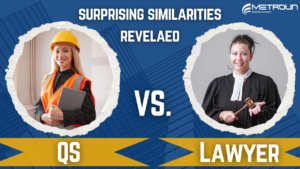As most of you probably already know, apple recently released a new product. A Virtual & Augmented Reality (VR/AR) headset. VR/AR headsets have been on the market for some time now. However, their usage has been mostly for playing video games. We’ve yet to see them used regularly in the workspace, as many promised they would be. Perhaps this new release from apple signals a move towards real life practical application. Or, perhaps the $3,500 price tag is still too much of a barrier. Either way, apple’s release of their first touch screen phone paved the way for the normalisation of touch screen phones. Perhaps we’re only a decade away from this product being the norm in the work place.
In this article, we’re going to take you through the lifecycle of a construction project, showing you the practice applications of VR/AR at each stage of the project.
[Step 1: Design Phase]
“The journey begins in the design phase. Here, VR offers architects, engineers, and clients the opportunity to fully immerse themselves within virtual models of their projects. This immersive experience facilitates a comprehensive understanding of spatial dynamics, allowing for informed decision-making. This capability enables stakeholders to refine and optimise designs before physical construction begins, ensuring efficiency and cost-effectiveness.”
[Step 2: Planning and Approval Process]
“During the planning and approval stage, VR plays a crucial role in enhancing stakeholder engagement and communication. By presenting projects within a virtual environment, it becomes easier to convey complex ideas and secure necessary approvals from authorities, investors, and the community, streamlining the process and fostering transparency.”
[Step 3: Construction Phase]
“In the construction phase, AR technology comes to the forefront, enabling construction teams to overlay digital project information onto the physical site. This integration allows for precise placement and alignment of structural components, directly guided by the digital plans. It minimises errors, ensures accuracy, and accelerates the construction timeline.”
“Additionally, AR facilitates real-time access to construction documents and updates, keeping the site team informed and ensuring that the project adheres to the latest specifications. This continuous access to updated information is critical for maintaining project momentum and alignment.”
[Step 4: Inspection and Quality Control]
“As construction progresses towards completion, the focus shifts to inspection and quality control. AR technology aids inspectors by providing detailed overlays of the intended design, making it easier to identify discrepancies and ensure compliance with standards. This digital assistance enhances the efficiency of the inspection process, promoting high-quality outcomes.”
[Step 5: Maintenance and Operations]
“Upon completion, the focus transitions to maintenance and operations. AR and VR extend their utility into the post-construction phase, offering tools that revolutionise facility management. AR enables maintenance personnel to visualise the internal components of the structure, pinpointing issues without the need for invasive measures. VR, in contrast, serves as an effective training platform for staff, preparing them for maintenance tasks within a controlled virtual environment.”
Introducing Metroun Learning
Metroun Learning is an online education platform, specific to Quantity Surveyors which can satisfy all your formal CPD needs. We offer over 30 hours of formal CPD, with new courses added each month. Although all courses amass to 30 hours of formal CPD, each individual course has been engineered so it can be completed during your lunch break. This can save you time, money & reduce your carbon footprint. Metroun Learning will not only satisfy your formal CPD needs, but you’ll also gain access to:
- The QS Dictionary
- Industry-Ready Templates
- Metroun AI
- And a variety of construction conversion calculators
To join Metroun Learning, simply click here






